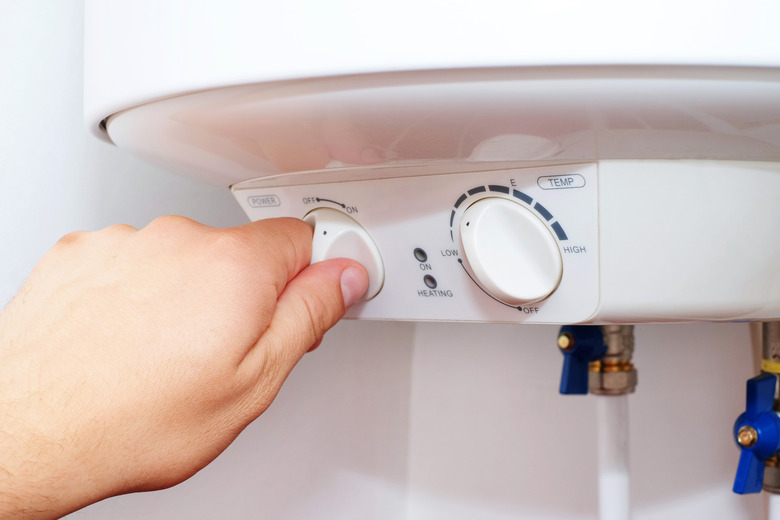How To Adjust The Temperature On An Electric Water Heater
We may receive a commission on purchases made from links.
Are you wondering how to adjust the temperature on an electric water heater? Whether the water comes out of the tap too hot or too cold, changing the thermostat on the unit should help you get to the ideal temperature. The process on an electric water heater is relatively easy as long as you follow basic safety guidelines.
Electric Water Heater Recommended Temperature
Electric Water Heater Recommended Temperature
Before you try to adjust the temperature on an electric water heater, consider the recommended temperature and potential dangers of different settings. The U.S. Department of Energy recommends a water heater setting of 120 degrees Fahrenheit for most households.
Water heaters often come set at 140 F. That higher setting can lead to scalding if you turn the water too hot when washing your hands or taking a shower. The risk can be even greater to kids who might turn the faucet too far to the hot side. A lower thermostat setting isn't only safer, but it also saves money on your energy bill by reducing standby heat loss.
Measure the Current Temperature
Measure the Current Temperature
Before you make adjustments, find out how hot the water is that's currently coming from your faucets. A regular cooking thermometer can measure the water temperature effectively.
Turn on the hot water in the faucet closest to your water heater. Collect some of the water in a cup and measure the water temperature using your thermometer. Leave it in the water until the thermometer stops increasing. If it doesn't reach 120 F, you should increase the temperature on the water heater. If it's too hot, adjust the thermostat to a lower temperature.
Access the Thermostat
Access the Thermostat
For safety reasons, shut off the electricity to your water heater before making any adjustments. Electric water heaters often have two heating elements and two thermostats, so you'll need to access and adjust both. Set the thermostats to the same temperature for the best results.
Remove the access panels using a Philips screwdriver or a flat-head screwdriver. Remove the screws holding the panel in place to reveal the thermostat. Put the screws in a safe place so they don't get lost while you adjust the thermostats. You might also need to remove insulation to see the thermostat.
Adjust the Temperature Setting
Adjust the Temperature Setting
Be careful not to touch or move the wires inside the water heater. Turn the dial in the appropriate direction, depending on whether you want to increase or decrease your water temperature. Use the markings on the dial to decide on the direction. Your screwdriver makes it easy to adjust the dial. Put the insulation and panel back in place. Reattach the panel using the screws.
Test the Water Temperature
Test the Water Temperature
Turn the power back on to your water heater. Give it at least three to four hours to reach the new temperature setting before you double-check it. Use the same method as your initial temperature check, turning the faucet closest to the water heater to the hot setting and collecting water.
Check the temperature using your cooking thermometer. If it reaches your desired temperature, you're all set. If you want it hotter or colder, repeat the thermostat adjustment process, wait a few more hours and test the water temperature again.
When you find the ideal setting for your thermostat, make a mark on the dial. This helps you get back to that temperature if you make adjustments in the future for any reason.
